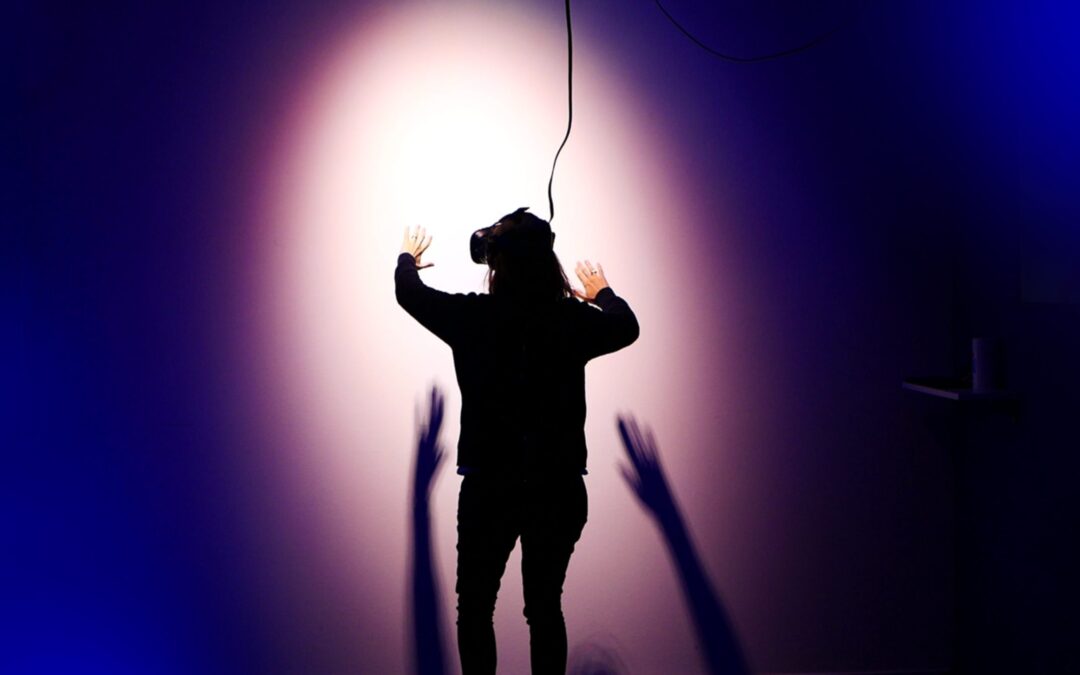America has a long history of attempts to treat mental illnesses and address mental health issues. From asylums and lobotomies to the beginning of modern therapy treatments, the system of mental health care has come a long way. But of course, there is still much to be done. While researchers, practitioners, and clinicians are still on the hunt for more advanced evidence-based treatments, each day we are gaining new information on successful, new treatment techniques…like Virtual Reality (VR) therapy.
 What is VR?
What is VR?
You’ve likely heard the term “VR” being tossed around but you’re not alone if you really don’t know how to make sense of it. T
he Industrial Psychiatry Journal states that virtual reality refers to “the immersive, interactive, multi-sensory, view-centered, three-dimensional computer-generated environments and the combination of technologies required to build these environments”.
If you’re still lost, you’re again, not alone.
Virtual reality is essentially any type of simulated experience. It can mimic a completely authentic real-world situation or create a fantasy reality, which is why it is commonly used for entertainment purposes.
What does VR have to do with mental health?
Over the past twenty years, researchers have been studying how to utilize virtual reality for the treatment of various mental health disorders.
VR therapy is an effective tool for the management, assessment, and management of a variety of psychiatric disorders. It is most commonly used as a form of exposure therapy because it allows individuals to experience exposure to whatever negative stimuli they may fear, through a “virtual world”.
Exposure therapy is often a daunting experience to individuals who live with phobias, PTSD, anxiety, or additions, and VR provides a space that feels real with the safeguard of being able to remind oneself that it actually isn’t real.
Through this experience, individuals can immerse themselves in these situations with a clinician alongside to assess how they are physically and mentally reacting to whatever stimuli they are at face with.
With a licensed professional there, they are able to observe the client’s response to these situations and utilize this information to plan for an appropriate treatment plan.
VR has been verified to be effective in the treatment of:
- Acrophobia
- Panic disorder
- Agoraphobia
- Body Image Disturbances
- Binge-Eating Disorders
- Fear of Flying
- PTSD
- Physical Pain
- Claustrophobia
- Social Phobia
[Related: Virtual Reality Therapy in Social Anxiety Disorder]
Typical VR exposure treatment will often begin with scenes that include a few references to the feared stimuli. With time, the negative stimuli will increase, as will the intensity, with the purpose of creating a learned response for the client to feel more used to the stimuli and develop healthy and appropriate responses.
The main goal is most VR therapy is to reach a point where one’s biggest fears or phobias no longer evoke a response great enough to impair their level of functioning. It is important to understand that this experience is guided by a professional and that traditional forms of talk therapy are included before and after VR exposure so that the experience is put into perspective for the client. Through more traditional forms of therapy, the client can also learn relaxation techniques, and proper coping mechanisms to implement when faced with their fears.
Drawbacks:
VR therapy is still new, and like most mental health treatments, it comes with a few limitations. Although its effectiveness has been proven in many cases, one of the biggest difficulties with VR therapy is availability. It is not currently widely accessible. The cost of the equipment and programs used for VR therapy is high so not all clinicians and practitioners have it as a treatment option.
A large part of figuring out how to implement VR therapy into treatment options is addressing the cost of the systems used so that it can be introduced in “routine clinical use”. Aside from gaining access to VR therapy, physical side effects from the technology aspect of the treatment have been found as well: dizziness, nausea, headaches, eye strain, and in some cases seizures.
All in all…
VR therapy is very promising. There are clear advantages to the technology, but obviously, work still needs to be done in terms of advocating for its accessibility. If used in the appropriate setting with the correct level of instruction- VR therapy could be the next big thing for mental health treatment.

